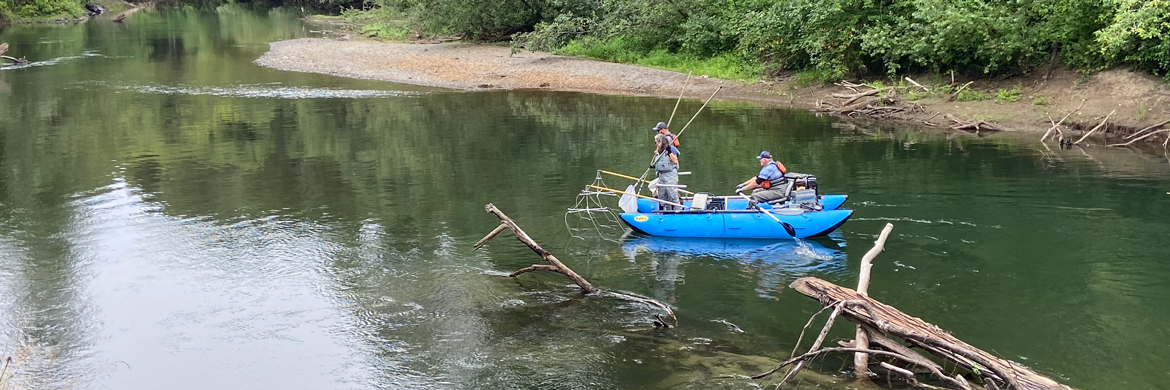Contaminants we regularly monitor

The Toxic Chemical Assessment unit regularly monitors several chemicals across King County through our long-term monitoring programs and projects. These contaminants come from various sources, including industrial activities, consumer products, vehicle emissions, and stormwater runoff. Some, like heavy metals and PCBs, have long been present in the environment, while others, such as PFAS and 6PPDQ, are newly recognized pollutants with emerging concerns.
Our monitoring helps track where these contaminants occur and whether their levels are increasing or decreasing over time. We use this information to reduce toxic exposures to people and aquatic life and support environmental restoration projects.
Legacy toxic organic chemicals
These include persistent manufactured chemicals that were created and used in the past but are still found in the environment.
PCBs (polychlorinated biphenyls)
PCBs are chemicals that were produced in the US and used in hundreds of industrial and commercial applications until they were mostly banned in 1979. Many PCB-containing products remain in use today. Some PCBs are still produced as a by-product of manufacturing.
PBDEs (polybrominated diphenyl ethers)
PBDEs are chemicals containing bromine used as flame retardants in a number of applications, including textiles, plastics, electronics, wire insulation, and automobiles. Washington State restricted PBDE use in products and EPA initiated a ban on the most toxic form of PBDEs in 2009.
Contaminants of emerging concern (CECs)
PFAS (per-and-polyfluoroalkyl substances)
PFAS, also known as "forever chemicals", are a class of manufactured chemicals that contain fluorine. These chemicals are used in many industrial and consumer products to make them resistant to heat, water, or stains. PFAS are now present nearly everywhere in the environment and certain PFAS are harmful to humans and animals.
6PPD-quinone (6PPDQ)
6PPD is an antioxidant used in vehicle tires that reacts with ozone in air to create 6PPDQ, which gets into streams from road runoff and is highly toxic to Coho salmon and some other fish species.
Heavy metals
Metals are naturally found in the environment, but their extraction and use in industrial and manufacturing processes causes them to accumulate in unnatural ways. They are some of the most common environmental contaminants and can enter the Puget Sound through stormwater runoff, industrial releases, and aerial deposition.
While some metals, like zinc or iron, are needed in small amounts, many metals are also toxic, especially at high concentrations. People can be exposed to these metals through eating fish and shellfish, so we regularly monitor the following metals in fish and shellfish tissues:
Polycyclic aromatic hydrocarbons (PAHs)
PAHs are a group of many chemicals that occur naturally in coal, oil, and gas. They are also commonly found in tar-based products such as asphalt sealants and creosote. Creosote is a thick, tar-like material used to preserve wood, commonly found in old railroad ties, utility poles, and marine pilings.
PAHs enter the environment through creosote leaching from treated wood, crude oil spills, and during the burning of fossil fuels, wood, and tobacco. Exposure to certain PAHs or mixtures of PAHs can cause serious health effects in humans and wildlife, including cancer.
Biomarkers
A biomarker in toxicology is a biological measurement that indicates exposure to toxic substances in living organisms and potential effects. Biomarkers are not contaminants themselves but are used by scientists to explore the connection between an organism’s contaminant exposure, the internal level of contamination in its tissues, and possible negative effects within the organism. Various types of biomarkers can provide information about an organism’s physiological and metabolic processes related to its health, growth, and reproduction.
One of the biomarkers used by our program is vitellogenin in fish blood. Vitellogenin is a protein produced by the liver and associated with egg production in females. Since males do not produce eggs, the presence of vitellogenin in their blood plasma indicates they are likely exposed to endocrine disrupting chemicals that mimic estrogen.
 Translate
Translate